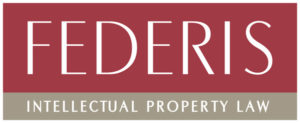Two recently published studies have examined key issues within the growing Philippine pharmaceutical market. Intellectual property was a focal point of discussion in both, due to the inevitable intersection of IP rights with public health policies, and economic and development goals.
The first study, entitled Non-Tariff Barriers (NTBs) in ASEAN and their elimination from business perspective, was published in June by the EU-Association of Southeast Asian Nations (EU-ASEAN) Business Advisory Council and the ASEAN Business Council. The study analyzed the automotive, agri-food and healthcare sectors of each ASEAN country, with emphasis on specific areas of concern such as technical barriers to trade, price control measures, and government procurement restrictions.

Associate
Federis & Associates
In interviews, industry players both local and foreign in the Philippine pharmaceutical market pinpointed slow registration processes, taxes on pharmaceuticals, price ceilings imposed under the National Disaster Response Plan, and lack of clarity regarding the registration process for the Philippine National Formulary as barriers to the entry, and obstacles to the development, of new pharmaceutical products.
On the IP side, firms cited limited patent criteria brought on by the Cheaper Medicines Act of 2008, and the provisions on parallel importation and special compulsory licensing in the IP Code of the Philippines. However, both measures were enacted specifically to protect and promote public health by increasing people’s access to quality medicines through lowering costs. As such, the government is engaged in a continuous process of trying to strike a balance, to develop sound, effective policies that address the needs of the public but also encourage patent owners to innovate.
The second study, entitled Transnational Organized Crime in Southeast Asia: Evolution, Growth, and Impact, was published in July by the UN Office on Drugs and Crime (UNODC). The study looked at the four most active transnational organized crime markets in Southeast Asia, namely: drugs and precursor chemicals; trafficking in persons and smuggling of migrants; environmental crimes; and counterfeit goods and falsified medicines. “Falsified medicines” is a catch-all term; they include not just spurious, counterfeit and falsely labelled medicines, but also medicines in which the active ingredients are either inert, too much or too little, different from indicated, or expired. Their common denominator is the intention to deceive consumers. Much pharmaceutical crime involves the illicit trade of such falsified medicines.
The Philippines emerged as the Southeast Asian country with the highest incidence of pharmaceutical crime, accounting for 193 incidents out of a total of 460 across all of Southeast Asia. The study identified Pakistan, China and India as the source countries for many of the falsified medicines that authorities have detected here in the past few years.
However, locally manufactured falsified medicines have also been found, some of which have made their way overseas, reaching the US, Japan, and Germany. The study estimated the revenue generated by criminal organizations from pharmaceutical crime in the Philippines to be about US$2 billion, a figure drawn from a 2014 study by the Organization for Economic Co-operation and Development (OECD) Task Force on Charting Illicit Trade.
Falsified medicines have long been an issue for the government, as they pose a major health and safety risk to the population. Rabies treatments are a popular target, due to the high incidence of animal bites and scratches, with the Department of Health recording over 1.2 million bite incidents in 2017. In just the past few months, the Food and Drug Administration (FDA) has issued multiple advisories warning the public about several counterfeit rabies vaccines and serums.
Recently, it has also issued public warnings regarding falsified tetanus, hepatitis C, and yellow fever vaccines, as well as counterfeits of both over-the-counter (ibuprofen, paracetamol) and prescription (dydrogesterone) medicines. Slimming products and medicines for the treatment of tuberculosis and erectile dysfunction are commonly counterfeited as well.
The study further noted that the rise in popularity of internet commerce has helped facilitate pharmaceutical crime, as it allows both sellers and buyers to bypass government regulations. The FDA currently only allows licensed pharmacies with physical stores to take online orders, but unlicensed sellers abound. The agency has ordered online retailers Lazada and Shopee to stop selling medicines on their respective platforms until they secure the necessary licences. However, selling through lesser-known sites and social media continues to be a cause for concern.
The EU-ASEAN study noted that the Philippine pharmaceutical market is currently the third-largest in ASEAN, and it is projected to be worth US$4.1 billion by 2020. With the country’s population continuing to grow and age, demand for medicines and other pharmaceutical products will only increase. Thus, all these intertwined issues regarding the development, access and illicit trade of medicines will continue to be talking points for years to come.
Amanda Carlota is an associate at Federis & Associates.

FEDERIS & ASSOCIATES
Suites 2004 and 2005, 88 Corporate Centre
141 Valero St, Salcedo Village
Makati City 1227, PhilippinesContact details:
Tel: +63 2 8896197-98
Email: mfederis@federislaw.com.ph
Fax: +63 2 8896132
www.federislaw.com.ph



























